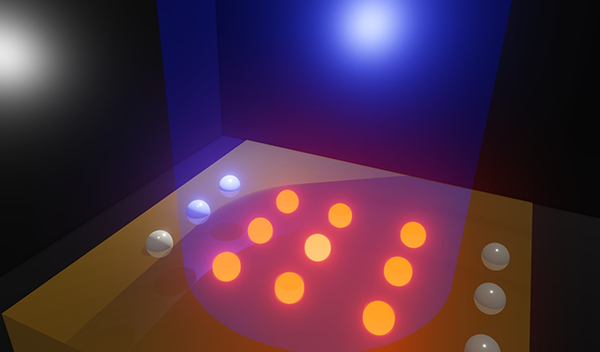Localized surface plasmon polaritons are characteristic modes that arise from the resonant interaction of photons with the free-charge oscillations in metallic particles. Plasmonic resonances have attracted great attention as a means to localize and enhance optical fields over subwavelength regions. Such unique properties have fostered the advent of the field of nonlinear plasmonics, relying on plasmonic field enhancement to boost otherwise weak nonlinear effects. One open challenge in nonlinear plasmonics is the selective optical excitation of high-order resonances, as those would offer higher quality factors and field confinement compared with the readily accessible dipolar modes. In addressing such issue, researchers at the University of Kansas (KU) have explored an uncharted path in nonlinear plasmonics: the parametric excitation and amplification of localized surface plasmon polaritons. In the article "Parametric Resonances in Nonlinear Plasmonics" published in Chinese Optics Letters, Vol 17, Issue 12, 2019 (Shima Fardad, Eric Schweisberger, Alessandro Salandrino. Parametric resonances in nonlinear plasmonics [Invited][J]. Chinese Optics Letters, 2019, 17(12): 122402), the Authors review the physical principles of plasmonic parametric resonance (PPR) and discuss potential applications of PPR.
In contrast with conventional localized plasmonic resonances, in which modes are excited directly by an external field of frequency and spatial profile matching those of a given mode of the plasmonic particle, PPR is a form of amplification in which a pump field transfers energy to a mode in an indirect way. In PPR in fact the modes of a plasmonic structure are amplified by means of a temporal modulation of the background permittivity caused by an appropriate pump field. Such permittivity variation translates into a modulation of the modal resonant frequency. Under specific pump conditions amplification can occur. Among the unique characteristics of PPR is the possibility of accessing modes of arbitrarily high order with a simple spatially uniform pump, provided that such pump exceeds a certain intensity threshold – a characteristic of all parametric resonances. The unique characteristics of PPR have prompted the author to introduce the concept of Plasmonic Parametric Absorbers (PPA). PPAs exhibit a reverse saturable absorption behavior whereby an incident field that is parametrically resonant with one or more of the modes of a plasmonic particle experiences a strongly enhanced absorption whenever its intensity exceeds the relevant PPR threshold. Such effect makes PPAs very promising candidates for optical limiting applications, in addition of being of fundamental interest in the emerging field of nonlinear plasmonics.
“We have barely scratched the surface of the promising science and applications that could emerge from parametric effects in nonlinear plasmonics,” commented Eric Schweisberger, a graduate student working with Prof. Salandrino and Prof. Fardad at the University of Kansas. The University of Kansas team is currently exploring the PPR theory in the context of propagating surface plasmons and is working towards an experimental demonstration of optical limiting exploiting plasmonic parametric absorbers.


Artist depiction of the parametric excitation of plasmonic modes of metallic nanospheres embedded in a nonlinear host medium.


